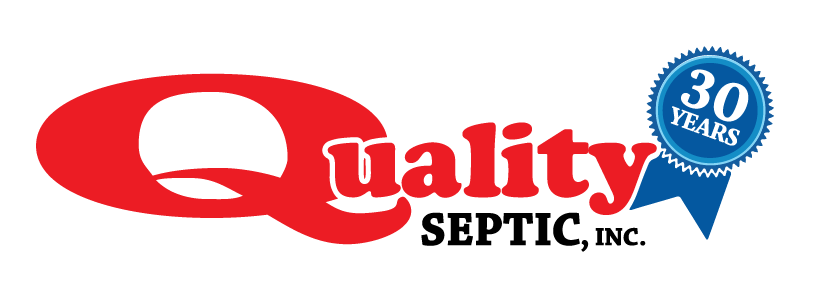If you rely on a septic system to manage your wastewater, chances are you’ve heard of a drain field. But you might not know the drain field’s purpose, function, and importance in helping your septic system run well. This is where Quality Septic Inc. comes in. We want to help you understand what a drain field is and why it’s essential to your septic system. The more you know, the better equipped you are to handle any septic issue that comes your way. While it’s imperative to leave many items up to the experts, you can also play a role in the health of your septic system’s health.
Let’s start with the basics – what is a drain field and why do you need one?
What is a Drain Field?
A drain field, also known as a leach field, is a critical component of a septic system. It consists of perforated pipes buried in gravel-lined trenches, covered by soil and vegetation. The drain field disperses and filters treated wastewater (effluent) that exits the septic tank. Solids settle in the tank as sludge, while liquids flow to the drain field for further treatment.
Why is the Drain Field Essential?
The drain field is vital for septic system health:
- Final Filtration: It removes bacteria, viruses, and nutrients before effluent enters the groundwater.
- Effluent Disposal: Prevents untreated wastewater from backing up into your home.
- System Longevity: Keeps the septic tank from overloading, extending its lifespan.
Without a functioning drain field, wastewater can contaminate the environment and cause health hazards.
How Does a Drain Field Work?
- Waste Flow: Treated liquid flows from the septic tank to the drain field through perforated pipes.
- Soil Absorption: Surrounding soil filters contaminants and pathogens.
- Biological Treatment: Microorganisms in the soil break down organic matter.
- Evaporation and Plant Uptake: Some water evaporates or nourishes plants.
Common Issues with Drain Fields
Drain fields can fail without proper care. Common problems include:
- Clogged Pipes: Non-biodegradable items block pipes, causing backups.
- Oversaturation: Excess water use or heavy rain overwhelms the field.
- Soil Compaction: Vehicles or heavy equipment compress soil, reducing absorption.
- Root Intrusion: Tree roots invade pipes, causing blockages and damage.
How to Maintain Your Drain Field
- Conserve Water: Repair leaks and spread-out water usage in your household.
- Be Mindful of Flushing: Only flush waste and septic-safe toilet paper.
- Protect the Area: Avoid driving or parking on the drain field.
- Monitor Vegetation: Plant shallow-rooted grass instead of trees or shrubs on or near the drain field.
- Schedule Maintenance: Have your system inspected and pumped every 3-5 years.
Signs of Drain Field Problems
Watch for these warning signs:
- Slow drains in your home.
- Sewage odors near the drain field.
- Pooling water or soggy soil.
- Lush, fast-growing grass over the field.
If these occur, contact a septic professional like Quality Septic Inc. immediately.
Next Steps
The drain field ensures wastewater is treated and safely returned to the environment. Proper maintenance protects your septic system and prevents costly repairs. You will always want to consult a trusted septic services provider like Quality Septic Inc. to perform any necessary maintenance, service, and inspections.
For more information, visit qualitysepticincorporated.com or call us at (813) 945-7552.

